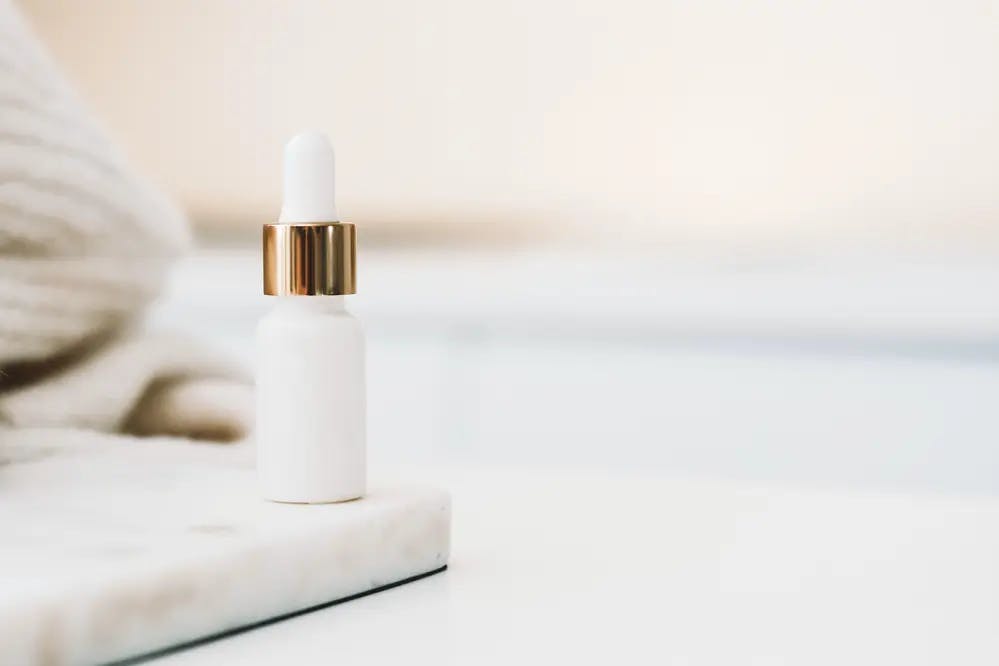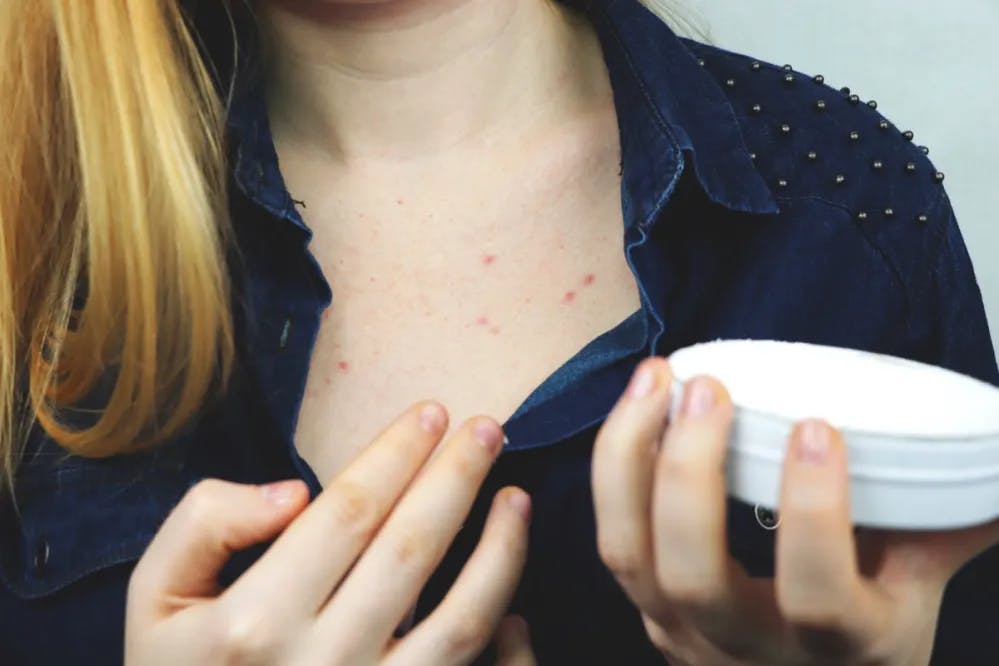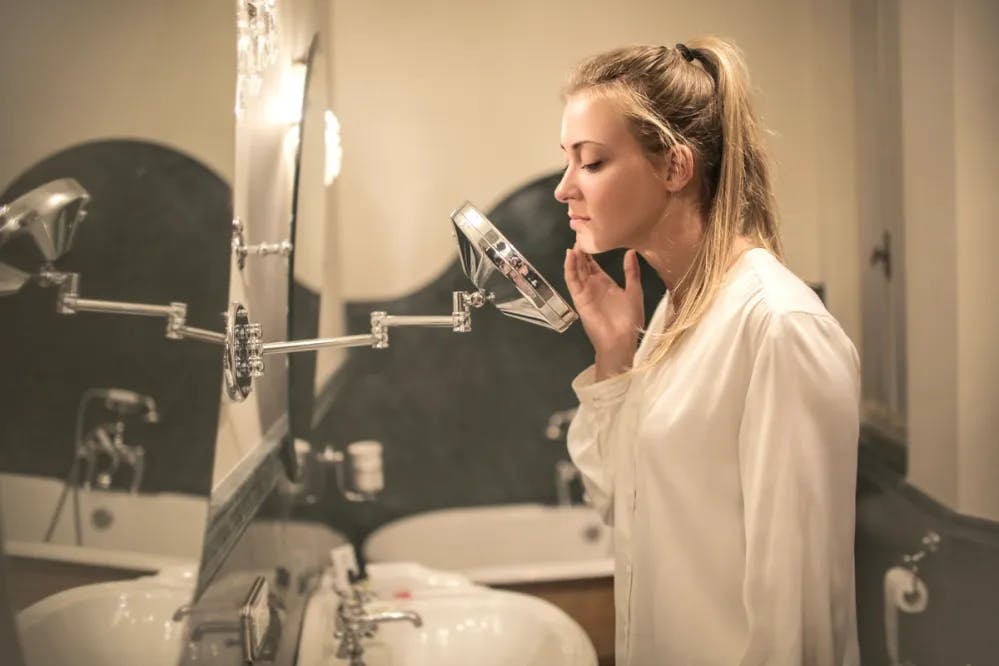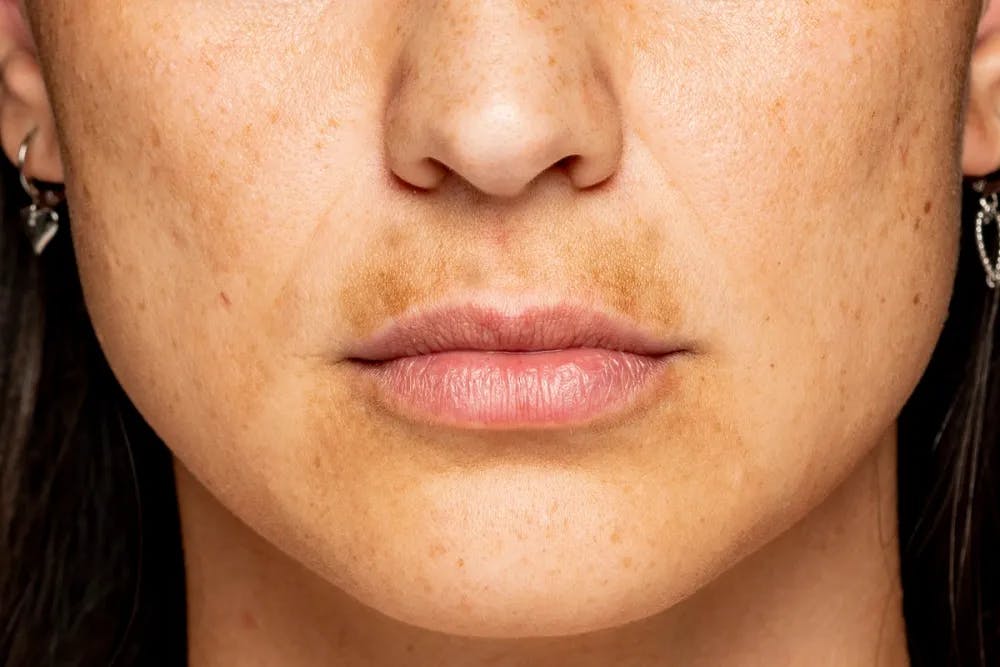Jawline Acne: What Is It And How Do You Treat It?
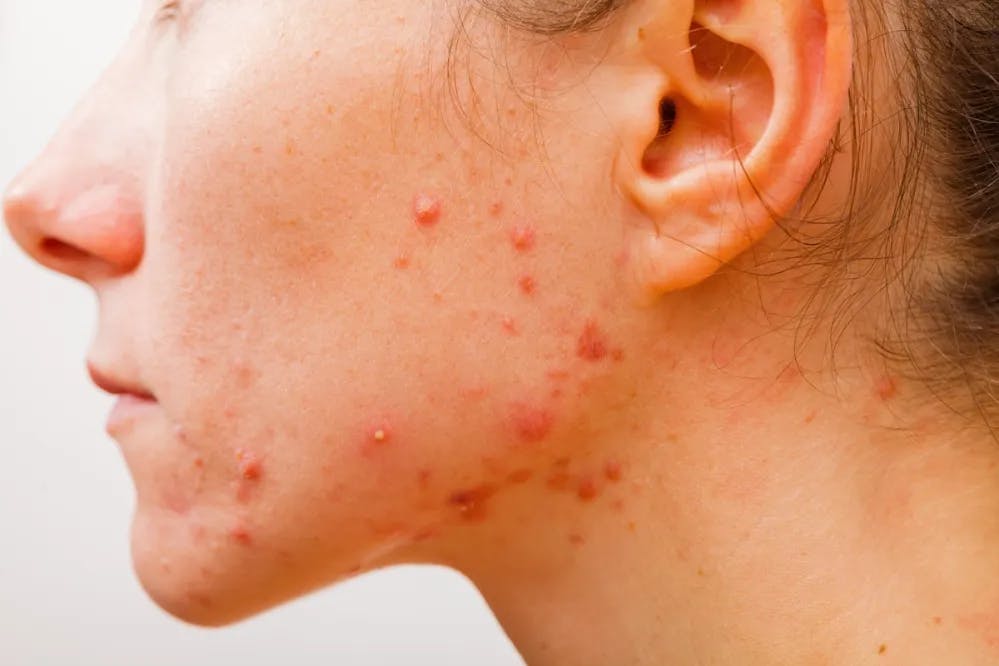
Table of Contents:
- The Common Causes of Jawline Acne
- How to Treat Jawline Acne
- Topical Treatments for Jawline Acne
- Oral Antibiotics for Jawline Acne
- Birth Control Pills for Jawline Acne
- Spironolactone for Jawline Acne
- Isotretinoin for Jawline Acne
- Non-Drug Treatments for Jawline Acne
- Could It Be Anything Else? Other Conditions Confused With Jawline Acne
- Prevention is Better Than Cure! Top Tips to Prevent Jawline Acne
Jawline acne is quite a common condition, with breakouts that can be caused by a variety of reasons - such as hormonal fluctuations, shaving, medications, certain cosmetic products, and excess oil or dead skin cells building up.
Luckily, treating jawline acne doesn’t often require a prescription. In this article, we will go through its causes and all the options you have to deal with this skin issue.
The Common Causes of Jawline Acne
Acne on the facial area or jawline (or any other part of the body, for that matter) is mainly a localized inflammation caused by the accumulation of dead cells and oil blocking the follicle duct. Where there is inflammation and bacterial growth, you get acne.1
So, the reason why you get acne around your jawline has similar causes to what happens on any other part of your body. There is, however, a key difference: Certain physical factors can contribute to and aggravate this problem.2 For instance:
- Cosmetic products: Makeup, moisturizers, and hair products that contain a lot of heavy oils can clog pores, causing acne breakouts especially emollients derived from a petroleum source, such as mineral oil, petrolatum, and others.
- Sports equipment: Certain sports equipment, such as helmets with chin straps, can also rub your chin and result in jawline acne.
- Musical instruments: If you play a musical instrument that rests on your chin (for example, a violin), you can also get clogged pores and acne.
- Shaving: Repeated abrasion during shaving is one of the most common reasons for jawline inflammation and acne. Plus, the chemicals in your shaving cream can also increase irritation, especially the formulations that are soap-based.
- Medications: Some common medications like corticosteroids, antidepressants, and contraceptive pills can also cause jawline acne.
- Fluctuating hormone levels: Abnormal hormonal levels can trigger high sebum secretion leading to higher bacterial growth and acne.
- Polycystic ovary syndrome: Similarly to the point above, because PCOS causes hormone imbalances, you can get acne in more sensitive areas of your body, such as your lower cheeks and jawline.
- Cleanliness: Not sanitizing phones or pillowcases that are in contact with your face or jawline or resting your face on your hand can also transfer dirt and germs and aggravate acne.
How to Treat Jawline Acne
Many people’s acne occurs on the jawline. Although there is no cure per se, there are many effective treatments that can clear acne and deal with blackheads, whiteheads, and pimples on the jaw. Let’s go through them in some more detail, shall we?
Topical Treatments for Jawline Acne
There are several topical products to treat acne. Some of the most popular prescription medicines to treat acne are topical retinoids, topical antibiotics, AHAs, salicylic acid, benzoyl peroxide, and azelaic acid.3,4 A popular salicylic acid toner to use is Paula’s Choice Skin Perfecting 2% BHA Liquid.
Benzoyl peroxide, for example, acts as an antiseptic, reducing the number of bacteria that lives on the surface of your skin. Topical retinoids, on the other hand, have an exfoliating effect that can remove dead skin cells from your skin and prevent them from building up within your hair follicles. If the effects of these two ingredients are irritating or painful, you can instead use azelaic acid - a milder medicine that can help kill bacteria.
Oral Antibiotics for Jawline Acne
You can also take oral antibiotics to treat jawline acne. Typically, these treatments last several months and are combined with topical treatments, especially when you need to treat more severe cases.
An example of an oral antibiotic used to treat jawline acne is the tetracyclines class, which takes about six weeks to improve the condition (one important consideration is that you cannot use this antibiotic while pregnant or breastfeeding; in this case, erythromycin will be prescribed instead).
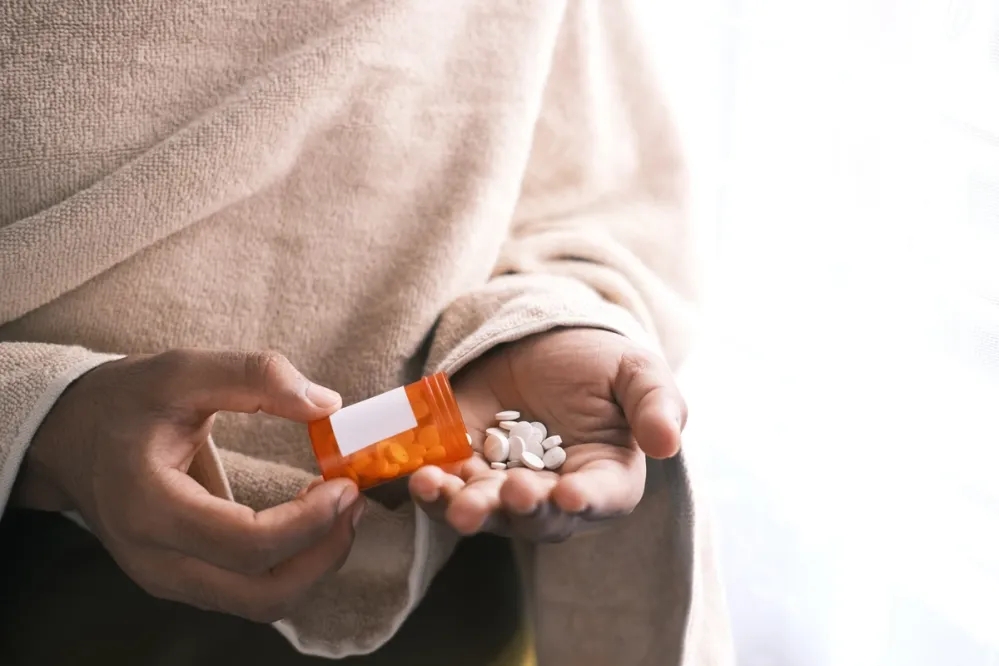
Birth Control Pills for Jawline Acne
The hormones included in birth control pills can actually help reduce acne, too. The reason is that they decrease the circulation of androgens, which in turn does the same for the production of sebum. However, to be effective against jawline acne, the contraceptive pills need to contain both estrogen and progestin.
Spironolactone for Jawline Acne
Spironolactone is an oral medication sometimes used to treat acne in women (it’s not prescribed to men due to side effects). When other treatments don’t work, spironolactone can treat deep-seated tender acne on the jawline, lower face, and neck.
Isotretinoin for Jawline Acne
In cases when acne does not respond well to other treatments, there’s yet another option: Isotretinoin.5 In fact, this is the only therapy that has an impact on all of the major aetiological factors implicated in jawline acne - reducing sebum production, inflammation, and surface and ductal P.acnes. Isotretinoin can only be prescribed by a doctor as it can cause birth abnormalities and depression.
Non-Drug Treatments for Jawline Acne
There are also non-drug treatments for jawline acne, including the use of green tea extract, aloe vera, and tea tree oil. Other alternatives are laser and light therapies, acne removal, and chemical peels. A soothing toner to try that is not comedogenic would be IsnTree Green Tea Fresh Toner.
Could It Be Anything Else? Other Conditions Confused With Jawline Acne
Rosacea and jawline acne can have very similar appearances. However, the redness and color change in acne is localized around the pimple; whereas, in rosacea, that redness or inflammation is profound all over the facial area.
Boils (or furuncles) are lumps caused by bacterial infection. They generally contain pus, and cells on the skin are highly swollen. Boils are severe cases of infection and may need clinical treatment. It can be difficult to determine whether an irritated bump is acne or a boil; plus, people with acne are also more prone to get boils.
Cellulitis can also appear as a red, swollen, and painful skin area. This skin infection is caused by bacteria, too (typically streptococcus or staphylococcus). Lastly, folliculitis is another condition that can be mistaken for acne.
In all these three cases, it requires a doctor’s opinion to distinguish and examine the boils or bumps and differentiate them from acne.
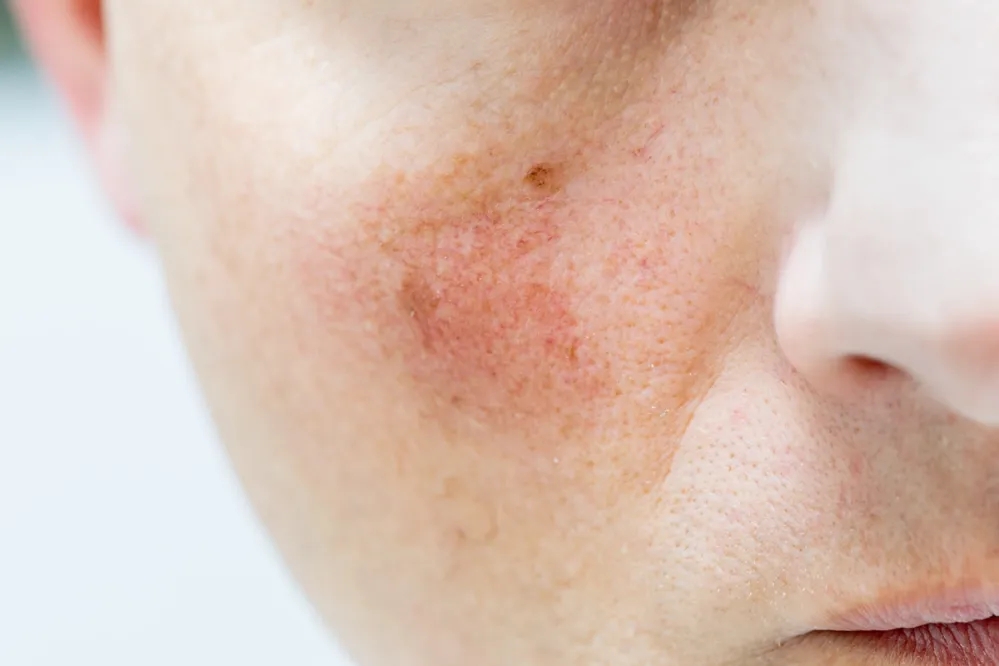
Prevention is Better Than Cure! Top Tips to Prevent Jawline Acne
We’ve gone through the causes and treatments for jawline acne, but is there something you can actually do to prevent this skin condition from appearing in the first place? Well, although jawline acne breakouts are a little tough to treat, the answer is: Yes, there are several things you can do to keep acne at a distance.6 For example:
- Avoid touching your face: No matter where it appears, all acne is related to bacteria getting trapped in your pores. So, one of the best ways in which you can prevent this issue is by keeping it away from your face. Wash your hands frequently and become more conscious of bad habits like resting your chin on your hand or picking at it.
- Try removing dairy from your diet: Milk can trigger oil production and worsen acne breakouts. Consider reducing your dairy intake for a few weeks and see if your jawline acne improves.
- Keep your cell phone clean: Phones are covered in bacteria. Wipe or clean yours as frequently as possible, and try to avoid it touching your face.
- Only treat your jawline acne: You might feel tempted to use blemish-fighting products all over your face. However, if you only have breakouts on your jaw or chin area, all you’ll do is dry out the rest of your skin. So, stick to the problematic zones only.
- Clean your pores: Lastly, remember that if you don’t properly purge your old blemishes, they can sometimes come back as new breakouts. It can help to get a professional to clear the blocked bores to prevent jawline acne from returning.
It’s important to seek support from others as they might be going through similar issues as yourself. Did you know there’s a community just for that? Join us at Breakout!
References:
- Shalita, A. R.; Rosso, J. Q. D.; Webster, G., Acne Vulgaris. CRC Press: 2011.
- Downie, M.; Guy, R.; Kealey, T., Advances in sebaceous gland research: potential new approaches to acne management. Inter. J. of Cosmet. Sci 2004, 26 (6), 291-311.
- Fox, L.; Csongradi, C.; Aucamp, M.; Du Plessis, J.; Gerber, M., Treatment modalities for acne. Molecules 2016, 21 (8), 1063.
- Kolli, S. S.; Pecone, D.; Pona, A.; Cline, A.; Feldman, S. R., Topical retinoids in acne vulgaris: a systematic review. American Journal of clinical dermatology 2019, 20, 345-365.
- Vallerand, I. A., R. T. Lewinson, M. S. Farris, C. D. Sibley, M. L. Ramien, A. G. M. Bulloch, and S. B. Patten. "Efficacy and adverse events of oral isotretinoin for acne: a systematic review." British Journal of Dermatology 178, no. 1 (2018): 76-85.
- Spencer, E. H.; Ferdowsian, H. R.; Barnard, N. D., Diet and acne: a review of the evidence. Int. J. Dermatol. 2009, 48 (4), 339-347.
